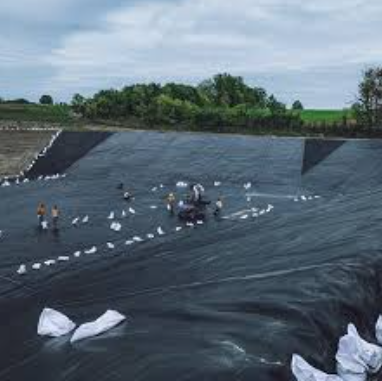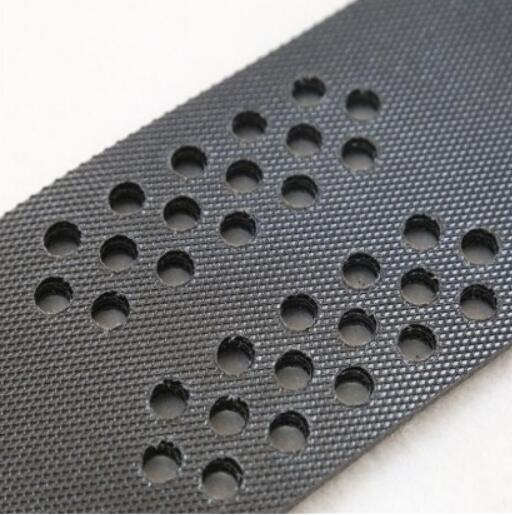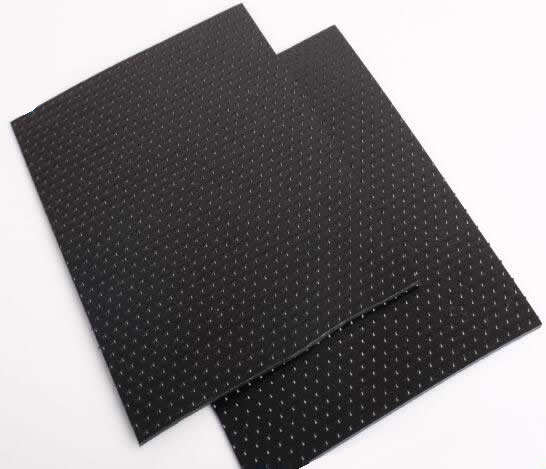- Understanding the Role of Geomembrane Liners in Waste Management
- Innovations in Geomembrane Liners for Water Management
- Geomembrane Liners: A Comprehensive Guide
- The Future of Geomembrane Liners in Civil Engineering
- Geomembrane Liners: Enhancing Landfill Stability
Manager:Alvin Wang
WhatsApp:+62 8983806051
Tel:+86 10-5797-1075
Email:steelwang@okorder.com
Address:3rd Floor, No.2 Building, No.1 Sanlihe Road
Which is better polyethylene or HDPE geomembrane?
When facing the dilemma of choosing between a conventional polyethylene geomembrane and High-Density Polyethylene (HDPE) geomembrane for containment applications, engineers and project stakeholders are left with no choice. Both materials have their own unique properties and advantages, which make them crucial considerations during project planning and designing processes. In this article we compare polyethylene geomembrane and hdpe Geomembrane to find out which one is better for various containment applications.

Understanding Polyethylene Geomembrane
Polyethylene geomembrane is an artificial liner made of polyethylene resin – a thermoplastic material that finds a lot of use in numerous applications. The flexibility, durability, impermeability are some characteristics of polyethylene geomembranes that makes it suitable for containment such as landfills, ponds, reservoirs or wastewater treatment facilities.
Understanding HDPE Geomembrane
On the other hand, HDPE geomembranes are a type of synthetic liners made from high-density polyethylene resin. Contrary to traditional polyethylene geomembranes, HDPE ones have much higher density as well as improved mechanical strength. Punctures tears and UV degradation hardly affect the integrity of HDPE glaciers making it perfect for very tough containment application.
Comparing Properties
While both polyethylene geomembrane and HDPE geomembrane share similarities in terms of flexibility, durability, and impermeability; they also exhibit distinct differences in their properties and performance characteristics.
1. Density And Mechanical Strength
Density level along with mechanical strength is among the main differences existing between Polyethylene Geomembrance (P.E.G.) and High-Density Polymer Ethylene (H.D.P.E.). When compared to traditional P.E.G., H.D.P.E.’s membranes possess greater densities as well as stronger mechanical strengths. As a result, these qualities make H.D.P.E more resistant to punctures, tears and other mechanical stresses, thereby enhancing its long-term performance and durability.
2. Chemical Resistance
Polyethylene geomembrane and HDPE geomembrane have excellent chemical resistance to a wide range of substances including acids, alkalis, solvents as well as hydrocarbons. Due to its higher density as well as a tighter molecular structure than traditional polyethylene it is made from, HDPE might have a little better chemical resistance.
3. Flexibility
Flexibility of traditional polyethylene geomembrane may be slightly greater than that of H.D.P.E geomembranes that offer better mechanical strength. The increased flexibility of polyethylene geomembranes can be an advantage in applications where conformability to irregular surfaces or movement is required. Nevertheless, the H.D.P.E geomembranes are still able to accommodate various installation conditions and environmental stresses.
4. Seam Integrity
Seam integrity is critical for ensuring the effectiveness of geomembrane liners in containment applications. It’s well known that HDPE has strong seams which do not leak or fail during welding process that are used for attaching these membranes to each other in such applications. While traditional PEG can also provide good seam integrity depending on material formulation of the specific kind being installed and fabrication techniques employed will determine the type of welding process/seam strength.
Applications
The choice between Polyethylene Geomembrance (P.E.G.) and High-Density Polymer Ethylene (H.D.P.E) depends on the specific requirements and conditions of containment application. These materials have their specialities and thus could fit certain applications better:
- Polyethylene Geomembrance: Traditional PEGs are best suited for most containment situations because they are flexible and cost-effective. It can be used for secondary containments, ponds or reservoirs due to ease with which it can be installed.
- HDPE Geomembrance: For containment cases requiring more durable structures with superior mechanical strength and chemical resistance, HDPE should be chosen. It has a higher density and tighter molecular structure which makes it suitable for applications like landfills, hazardous waste containment or industrial storage facilities.

Conclusion
In conclusion, opting for either a polyethylene geomembrane or an HDPE geomembrane depends on the specific demands as well as the circumstances in which it is applied for containment. Though these materials share common advantages such as flexibility, impermeability and durability, the HDPE geomembrane has been singled out due to its high density, better mechanical properties and more resistance to chemicals than any other competitor. This can be achieved through careful examination of performance characteristics and applicability of each material under consideration by engineers and project participants at large so that their decisions can be guided towards efficient functioning and long life of liners made from geomembranes in containment projects.
-
2024-12-05Geomembrane Liners: A Comprehensive Guide






